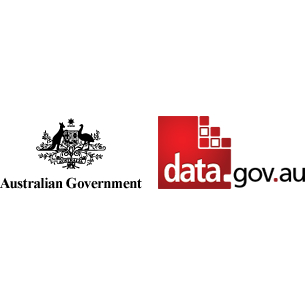Brief description
Under the Workplace Gender Equality Act 2012, non-public sector employers with 100 or more staff must report to the WGEA annually, which covers over 12,000 Australian organisations. Information collected and contained in the data files are the gender composition of the workforce and governing bodies/boards, percentage of organisations with policy and/or strategies across a broad range of gender equality issues, paid parental leave and flexible work arrangement offerings.Visit Data Explorer (https://data.wgea.gov.au/) for key trends and data visualisations
Visit Metadata registry (https://wgea.aristotlecloud.io/about/wgea/gender_equality_indicators) for further information about how we use the data to measure gender equality.
The Data Quality Declaration (https://www.wgea.gov.au/data/data-quality-declaration) addresses the overall quality of the Agency data in terms of relevance, timeliness, accuracy, coherence, interpretability, accessibility, and the institutional environment.
Full description
2023 WGEA Data - Public Data File -2022 WGEA Data - Public Data File -
2022 WGEA Data - List of Organisations by ABN -
2022 WGEA Data - Specifications -
2022 WGEA Data - ZIP Archive -
2021_publicdatafile.csv -
2021 data set -
2021 data specifications -
2021 data - ABNs included in a submission group -
2021 data mapping to legacy data - Mapping 2021 data elements to data elements prior to 2021, where there is a one to one equivalence
2021 reporting questionnaire -
2019 - 20 Workplace profile and reporting questionnaire -
2019-20 WGEA dataset -
2019 - 20 WGEA data codebook -
2018 - 19 Workplace profile and reporting questionnaire -
2018-19 WGEA dataset - Correction for question 13 and 3
2018 - 19 WGEA data codebook -
2017 - 18 Workplace profile and reporting questionnaire -
2017 - 18 WGEA dataset -
2017 - 18 WGEA data codebook -
2016 - 17 Workplace profile and reporting questionnaire -
WGEA dataset - ANZSIC division (2016-17) - Aggregated by the first level of ANZSIC (Division), displays workforce composition and questionnaire responses on key gender equality indicators
WGEA dataset - ANZSIC Subdivision (2016-17) - Aggregated by the first level of ANZSIC (Subdivision), displays workforce composition and questionnaire responses on key gender equality indicators
WGEA dataset - ANZSIC Group (2016-17) - Aggregated by the first level of ANZSIC (Group), displays workforce composition and questionnaire responses on key gender equality indicators
WGEA dataset - ANZSIC Class (2016-17) - Aggregated by the first level of ANZSIC (Class), displays workforce composition and questionnaire responses on key gender equality indicators
2015 - 16 Workplace profile and reporting questionnaire companion document -
WGEA dataset – ANZSIC Division (2015-16) - Aggregated by the first level of ANZSIC (Division), displays workforce composition and questionnaire responses on key gender equality indicators
WGEA dataset - ANZSIC Subdivision (2015-16) - Aggregated by the second level of ANZSIC, displays workforce composition and questionnaire responses on key gender equality indicators
WGEA dataset - ANZSIC Group (2015-16) - Aggregated by the third level of ANZSIC, displays workforce composition and questionnaire responses on key gender equality indicators
WGEA dataset - ANZSIC Class (2015-16) - Aggregated by the fourth level of ANZSIC, displays workforce composition and questionnaire responses on key gender equality indicators
2014 - 15 Workplace profile and reporting questionnaire companion document -
WGEA dataset - ANZSIC Division (2014-15) - Aggregated by the top level of ANZSIC, displays workforce composition and questionnaire responses on key gender equality indicators (2014-15)
WGEA dataset - ANZSIC Subdivision (2014-15) - Aggregated by the second level of ANZSIC, displays workforce composition and questionniare responses on key gender equality indicators (2014-15)
WGEA dataset - ANZSIC Group (2014-15) - Aggregated by the third level of ANZSIC, displays workforce composition and questionnaire responses on key gender equality indicators (2014-15)
WGEA dataset - ANZSIC Class (2014-15) - Aggregated by the fourth level of ANZSIC, displays workforce composition and questionniare responses on key gender equality indicators (2014-15)
Gender Composition Division (2014-15) - Gender composition of each industry division by occupation (2014-15)
Gender Composition Subdivision (2014-15) - Gender composition of each industry subdivision by occupation (2014-15)
Gender Composition Group (2014-15) - Gender composition of each industry group by occupation (2014-15)
Gender Composition Class (2014-15) - Gender composition of each industry class by occupation (2014-15)
WGEA dataset – ANZSIC Division (2013-14) - Aggregated by the first level of ANZSIC (Division), displays workforce composition and questionnaire responses on key gender equality indicators
WGEA dataset - ANZSIC Subdivision (2013-14) - Aggregated by the second level of ANZSIC, displays workforce composition and questionnaire responses on key gender equality indicators
WGEA dataset - ANZSIC Group (2013-14) - Aggregated by the third level of ANZSIC, displays workforce composition and questionnaire responses on key gender equality indicators
WGEA dataset - ANZSIC Class (2013-14) - Aggregated by the fourth level of ANZSIC, displays workforce composition and questionnaire responses on key gender equality indicators
Gender Composition Division (2013-14) - Gender composition of each industry division by occupation
Gender Composition Subdivision (2013-14) - Gender composition of each industry subdivision by occupation
Gender Composition Group (2013-14) - Gender composition of each industry group by occupation
Gender Composition Class (2013-14) - Gender composition of each industry class by occupation
Spatial Coverage And Location
text: Australia
Subjects
formal policy |
formal strategy |
gender composition |
gender equality |
gender in the workplace |
wgea |
women in leadership |
workplace gender equality |
User Contributed Tags
Login to tag this record with meaningful keywords to make it easier to discover
Identifiers
- Local : wgea-dataset
- URI : data.gov.au/data/dataset/4d35cd80-2538-4705-82f3-d0d18e823d98



